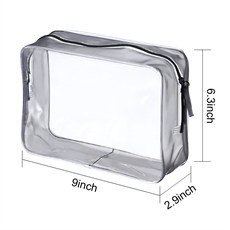Biodegradable plastic bags can help the environment in several ways:
- Reduced Plastic Pollution: One of the most significant environmental benefits of biodegradable plastic bags is their ability to break down more quickly in the environment compared to traditional plastic bags. This means they are less likely to persist in the environment as litter, reducing the visual blight and ecological harm associated with plastic pollution.
- Less Harm to Wildlife: Biodegradable bags are less likely to pose a threat to wildlife. Traditional plastic bags can be ingested by animals, leading to injuries or death. Biodegradable bags, which break down into natural substances, are less likely to cause harm if accidentally consumed.
- Lower Carbon Footprint: Many biodegradable bags are made from renewable resources such as cornstarch or sugarcane, which have a smaller carbon footprint compared to the fossil fuels used in traditional plastic bag production. This can contribute to reducing greenhouse gas emissions associated with bag manufacturing.
- Reduced Landfill Burden: Biodegradable bags can be processed in industrial composting facilities, where they break down more efficiently than in landfills. This helps reduce the burden on landfills, which are already overwhelmed with non-biodegradable waste.
- Promotion of Sustainable Practices: The use of biodegradable bags can encourage sustainable practices by consumers and businesses. They can serve as a reminder to reduce plastic consumption and consider the environmental impact of their choices.
- Regulatory Compliance: In regions where regulations and standards are in place, biodegradable bags can help businesses and consumers comply with laws aimed at reducing plastic waste and promoting more environmentally friendly alternatives.
- Support for Circular Economy: Biodegradable materials can be integrated into a circular economy model, where products are designed to be reused, recycled, or composted. This aligns with the principles of sustainability and waste reduction.
However, it’s important to note that the environmental benefits of biodegradable plastic bags depend on several factors, including the specific materials used, disposal methods, and environmental conditions. Some challenges and considerations include:
- Proper Disposal: Biodegradable bags must be disposed of correctly to achieve their environmental benefits. They often require specific conditions, such as industrial composting, to break down as intended.
- Verification and Standards: Not all products labeled as “biodegradable” meet the same standards for biodegradability. Regulatory bodies and industry standards help ensure that products claiming to be biodegradable meet specific criteria.
- Resource Inputs: The production of biodegradable materials may require resources such as water and energy, and the environmental impact of sourcing these resources should be considered.
- Consumer Education: Consumers need to be educated about the proper disposal of biodegradable bags to ensure they are used in an environmentally responsible manner.
In summary, biodegradable plastic bags can help the environment by reducing plastic pollution, minimizing harm to wildlife, and lowering the carbon footprint associated with bag production. However, their environmental benefits are maximized when they are used and disposed of correctly, and they should be considered as part of a broader strategy to reduce plastic waste and promote sustainability.














